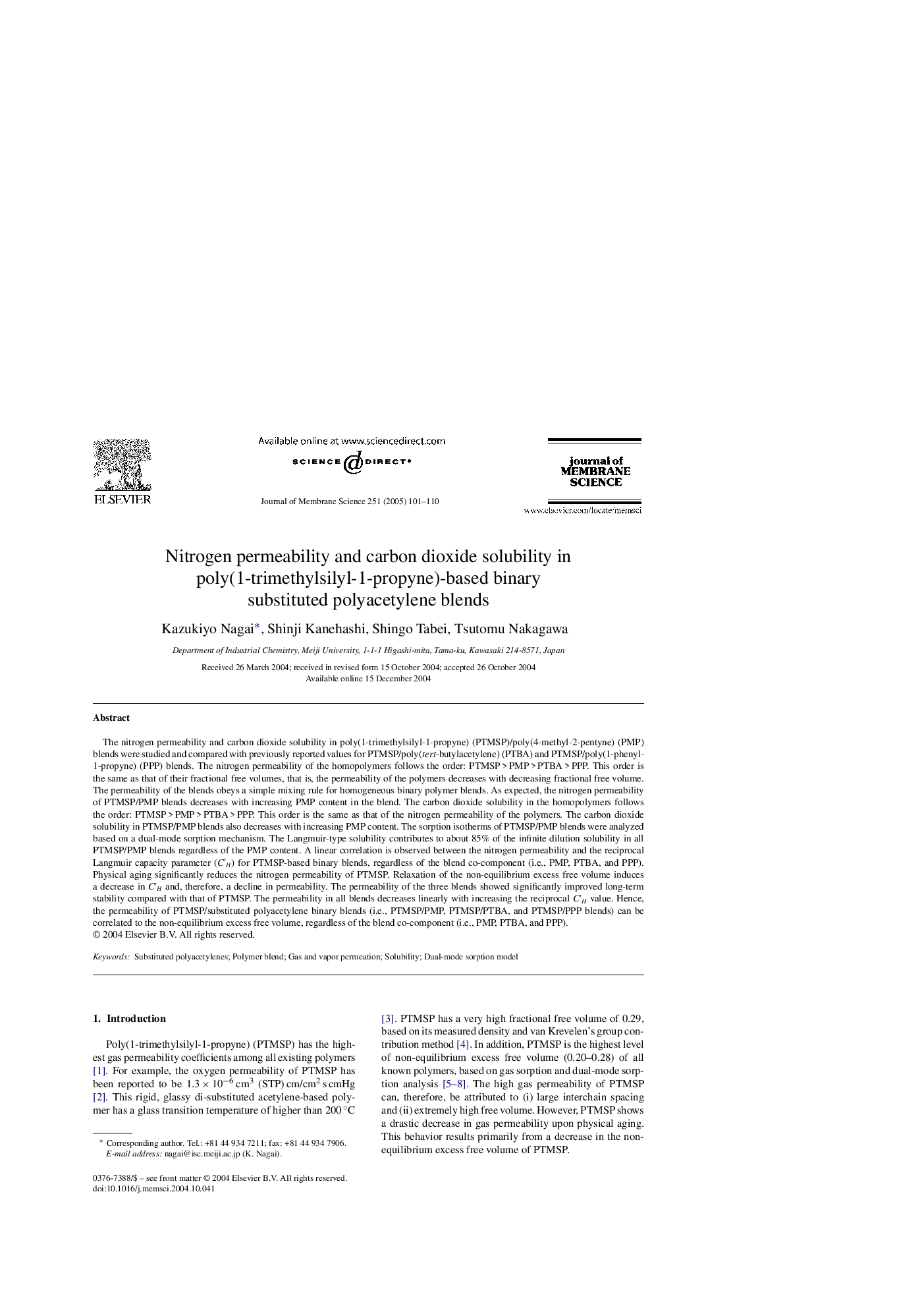| Article ID | Journal | Published Year | Pages | File Type |
|---|---|---|---|---|
| 9684971 | Journal of Membrane Science | 2005 | 10 Pages |
Abstract
The nitrogen permeability and carbon dioxide solubility in poly(1-trimethylsilyl-1-propyne) (PTMSP)/poly(4-methyl-2-pentyne) (PMP) blends were studied and compared with previously reported values for PTMSP/poly(tert-butylacetylene) (PTBA) and PTMSP/poly(1-phenyl-1-propyne) (PPP) blends. The nitrogen permeability of the homopolymers follows the order: PTMSPÂ >Â PMPÂ >Â PTBAÂ >Â PPP. This order is the same as that of their fractional free volumes, that is, the permeability of the polymers decreases with decreasing fractional free volume. The permeability of the blends obeys a simple mixing rule for homogeneous binary polymer blends. As expected, the nitrogen permeability of PTMSP/PMP blends decreases with increasing PMP content in the blend. The carbon dioxide solubility in the homopolymers follows the order: PTMSPÂ >Â PMPÂ >Â PTBAÂ >Â PPP. This order is the same as that of the nitrogen permeability of the polymers. The carbon dioxide solubility in PTMSP/PMP blends also decreases with increasing PMP content. The sorption isotherms of PTMSP/PMP blends were analyzed based on a dual-mode sorption mechanism. The Langmuir-type solubility contributes to about 85% of the infinite dilution solubility in all PTMSP/PMP blends regardless of the PMP content. A linear correlation is observed between the nitrogen permeability and the reciprocal Langmuir capacity parameter (Câ²H) for PTMSP-based binary blends, regardless of the blend co-component (i.e., PMP, PTBA, and PPP). Physical aging significantly reduces the nitrogen permeability of PTMSP. Relaxation of the non-equilibrium excess free volume induces a decrease in Câ²H and, therefore, a decline in permeability. The permeability of the three blends showed significantly improved long-term stability compared with that of PTMSP. The permeability in all blends decreases linearly with increasing the reciprocal Câ²H value. Hence, the permeability of PTMSP/substituted polyacetylene binary blends (i.e., PTMSP/PMP, PTMSP/PTBA, and PTMSP/PPP blends) can be correlated to the non-equilibrium excess free volume, regardless of the blend co-component (i.e., PMP, PTBA, and PPP).
Keywords
Related Topics
Physical Sciences and Engineering
Chemical Engineering
Filtration and Separation
Authors
Kazukiyo Nagai, Shinji Kanehashi, Shingo Tabei, Tsutomu Nakagawa,
